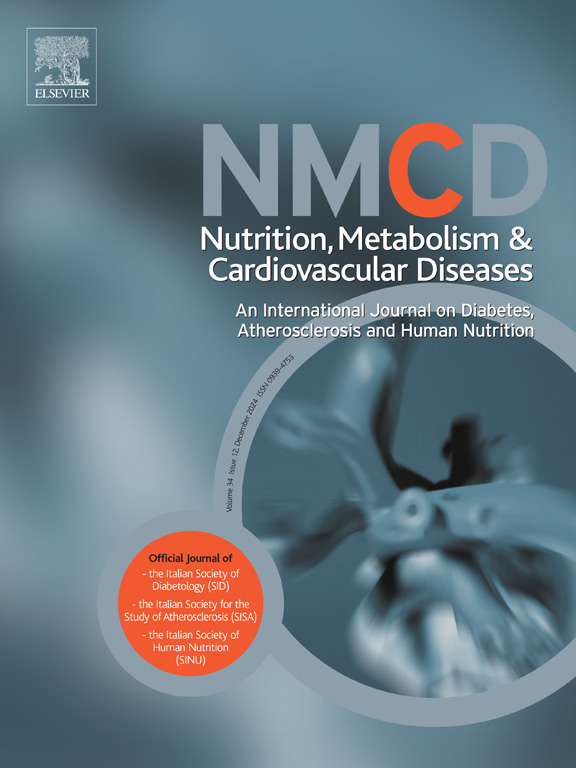The added value of an AI-based body composition analysis in a lung cancer screening population: preliminary results
IF 3.3
3区 医学
Q2 CARDIAC & CARDIOVASCULAR SYSTEMS
Nutrition Metabolism and Cardiovascular Diseases
Pub Date : 2025-02-01
DOI:10.1016/j.numecd.2024.07.013
引用次数: 0
Abstract
Background and aims
Body composition has been linked with clinical and prognostic outcomes in patients with cancer and cardiovascular diseases. Body composition analysis in lung cancer screening (LCS) is very limited. This study aimed at assessing the association of subcutaneous fat volume (SFV) and subcutaneous fat density (SFD), measured on chest ultra-low dose computed tomography (ultra-LDCT) images by a fully automated artificial intelligence (AI)-based software, with clinical and anthropometric characteristics in a LCS population.
Methods and results
Demographic, clinical, and dietary data were obtained from the written questionnaire completed by each participant at the first visit, when anthropometric measurements, blood sample collection and chest ultra-LDCT were performed. Images were analyzed for automated 3D segmentation of subcutaneous fat and muscle.
The analysis included 938 volunteers (372 females); men with a smoking history of ≥40 pack-years had higher SFV (p = 0.0009), while former smokers had lower SFD (p = 0.0019). In female participants, SFV and SFD differed significantly according to age. SFV increased with rising BMI, waist circumference, waist-hip ratio, and CRP levels ≥2 mg/L (p < 0.0001), whereas SFD decreased with rising BMI, waist circumference, waist-hip ratio, and CRP levels ≥2 mg/L (p < 0.001) in both sexes. SFV was associated with glycemia and triglycerides levels (p = 0.0067 and p=<0.0001 in males, p = 0.0074 and p < 0.0001 in females, respectively), while SFD with triglycerides levels (p < 0.0001).
Conclusion
We observed different associations of SFV and SFD with age and smoking history between men and women, whereas the association with anthropometric data, CRP, glycemia and triglycerides levels was similar in the two sexes.
基于人工智能的身体成分分析在肺癌筛查人群中的附加值:初步结果
本文章由计算机程序翻译,如有差异,请以英文原文为准。
求助全文
约1分钟内获得全文
求助全文
来源期刊
CiteScore
6.80
自引率
2.60%
发文量
332
审稿时长
57 days
期刊介绍:
Nutrition, Metabolism & Cardiovascular Diseases is a forum designed to focus on the powerful interplay between nutritional and metabolic alterations, and cardiovascular disorders. It aims to be a highly qualified tool to help refine strategies against the nutrition-related epidemics of metabolic and cardiovascular diseases. By presenting original clinical and experimental findings, it introduces readers and authors into a rapidly developing area of clinical and preventive medicine, including also vascular biology. Of particular concern are the origins, the mechanisms and the means to prevent and control diabetes, atherosclerosis, hypertension, and other nutrition-related diseases.

 求助内容:
求助内容: 应助结果提醒方式:
应助结果提醒方式:


